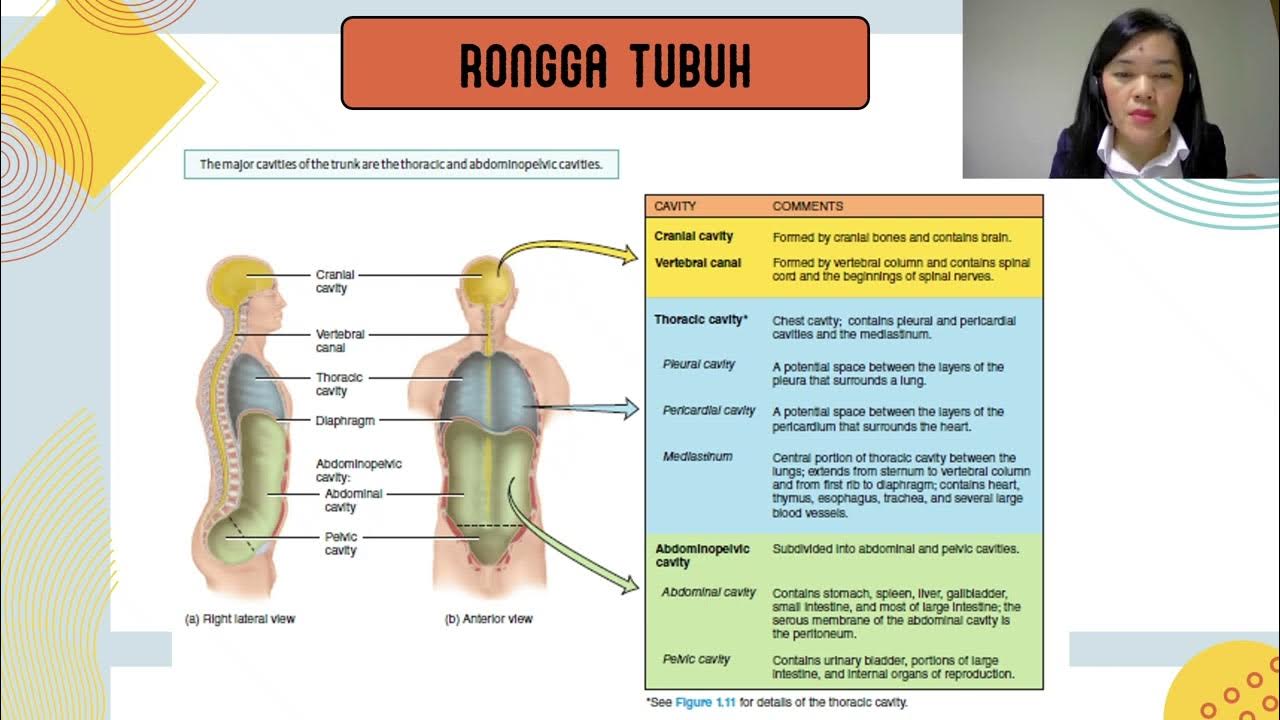Regiones corporales
Summary
TLDRThis video provides a comprehensive overview of the human body's main regions, which are divided for anatomical study into the head, neck, trunk, and upper and lower limbs. The head includes the facial and cranial regions, while the neck houses the cervical vertebrae and key structures like the larynx and trachea. The trunk consists of the thoracic, abdominal, and pelvic regions, with each containing vital organs. The upper and lower limbs are explained in detail, from the shoulder and arm to the pelvis and legs, offering a thorough understanding of human body anatomy.
Takeaways
- 😀 The human body is divided into five main regions for anatomical study: head, neck, trunk, upper limbs, and lower limbs.
- 😀 The head is divided into two subregions: the facial region (including eyes, nose, mouth, and ears) and the cranial region (which protects the brain).
- 😀 The neck, located below the head, consists of seven cervical vertebrae and various structures like the larynx, trachea, and esophagus.
- 😀 The trunk is the central part of the body, connecting the neck and limbs. It is divided into the thoracic, abdominal, and pelvic regions.
- 😀 The thoracic region (or chest) houses the respiratory and cardiovascular organs, as well as the mammary, sternal, axillary, and vertebral regions.
- 😀 The abdominal region, located between the thoracic and pelvic regions, contains abdominal organs and is bordered by the lumbar vertebrae and strong muscle walls.
- 😀 The pelvic region is at the base of the trunk, protecting the pelvic organs and supporting the upper body during bipedal movement.
- 😀 The perineum, located in the pelvic region, houses the external genital organs and the anus.
- 😀 Upper limbs are located on the sides of the torso and consist of the shoulder, arm, cubital region, forearm, and hand (divided into carpal, metacarpal, and phalanges).
- 😀 Lower limbs are positioned below the pelvis and are divided into the hip, thigh, knee, leg, and foot (further subdivided into tarsal, metatarsal, and phalanges).
Q & A
What are the main regions of the human body for anatomical study?
-The main regions of the human body for anatomical study are the head, neck, trunk, upper limbs, and lower limbs.
What subregions make up the head?
-The head consists of two subregions: the facial region and the cranial region.
What structures are included in the facial region?
-The facial region includes the eyes, nose, mouth, and ears.
What is the cranial region and what does it protect?
-The cranial region corresponds to the entire bony structure of the skull and protects the brain.
What is the role of the neck in the body?
-The neck is located below the head and consists of seven cervical vertebrae, muscles that allow head movement, and structures like the larynx, trachea, and esophagus.
How is the trunk divided anatomically?
-The trunk is divided into the thoracic region, abdominal region, and pelvic region.
What does the thoracic region contain?
-The thoracic region contains the respiratory and cardiovascular organs, along with the mammary, sternal, axillary, and vertebral regions.
What is located in the abdominal region?
-The abdominal region, located between the thorax and pelvis, contains the abdominal organs and is bordered by lumbar vertebrae and a muscular wall.
What is the function of the pelvic region?
-The pelvic region houses the pelvis, sacrum, and coccyx, protecting the pelvic organs and enabling bipedal movement by supporting the upper body.
How are the upper and lower limbs divided anatomically?
-The upper limbs are divided into the shoulder, arm, cubital region, forearm, and hand, while the lower limbs are divided into the hip, thigh, knee, leg, and foot.
Outlines

This section is available to paid users only. Please upgrade to access this part.
Upgrade NowMindmap

This section is available to paid users only. Please upgrade to access this part.
Upgrade NowKeywords

This section is available to paid users only. Please upgrade to access this part.
Upgrade NowHighlights

This section is available to paid users only. Please upgrade to access this part.
Upgrade NowTranscripts

This section is available to paid users only. Please upgrade to access this part.
Upgrade NowBrowse More Related Video
5.0 / 5 (0 votes)





